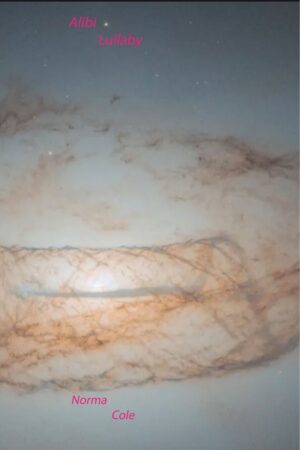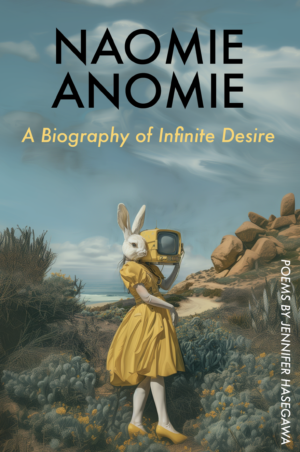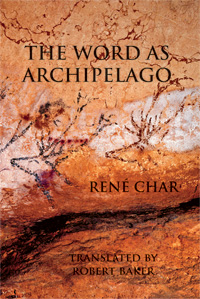Description
As the title of The Not Forever suggests, these poems take not only mortality, but also the impossibility of truly assessing mortality, as their endlessly inexplicable subject. Keith Waldrop’s language is, by turns, wry, brazen, brilliant, humorous, sorrowful, and entirely unforgettable as he focuses upon all that cannot be absorbed by the logical mind’s measure of aging and loss. Waldrop is a master at discerning what is recognizable within the “not” of our attention whether it is an attention to the future, the past, or to that instant we call the present, which is the most impossible to grasp. His canny meditations make the particulars of daily life shine with an uncanny brilliance as he assesses the quintessentially human inability to exact knowledge from the existence that we live, as well as from the inexistence that we each are veering toward. A major force in American avantgarde poetics for decades, Waldrop gives us an emotionally compelling, intellectually demanding articulation of what living in full awareness of the “not forever” means.
One of Coldfront‘s Top 40 Poetry Books of 2013:
In this and the ten other sequences in The Not Forever, the thingness of a whole life, which includes its ephemerality, becomes both palpable and baffling.
One of The Volta‘s Best Books of 2014
These “inventions,” as Waldrop names them, bring to mind in vivid fashion the myriad meanings of the word and its root: “to come upon,” “to discover or find,” “to fashion by means of the imagination,” and so on. There is also of course the musical invention, a short theme developed contrapuntally. Waldrop’s music explores, by means of his singular voice, “time’s bric-a-brac,” the enigmas of belief, identity and relation, the mystery of the “now,” and what de Kooning memorably called reality’s “slipping glimpse.” The Not Forever challenges our habits of perception in ways both playful and deeply serious.
Michael Palmer, author of Thread
Asserting the sovereignty of the actual, Waldrop presents us with the objects of this world in all their singularity and irreducibility. The author of some twenty volumes of poetry and prose, in this work he pursues the questions that have driven all his works—the difference between body and spirit, the distinction between surface and depth—in ever-expanding terms and yet in ever more detailed and meticulous ways. Lifting vocabulary and tone from the philosophic, the mythic, the scientific, and the biblical, these pieces take a vast range of knowledge and of ways of knowing and fold them in together to create a millefeuille of idea and image in which the only real thing is language. This is a work whose beauty and intensity anchor us to the present, and keep us there.
Cole Swensen, author of Gravesend
About the Author
Reviews
Excerpt
Keith Waldrop is the author of numerous collections of poetry, most recently Transcendental Studies (University of California Press, 2009), a trilogy of collage poems which won the National Book Award for Poetry. Also, Several Gravities (Siglio, 2009), a collection of collages and a translation of Charles Baudelaire’s Paris Spleen (Wesleyan, 2009). His other work includes The Real Subject: Queries and Conjectures of Jacob Delafon: With Sample Poems (Omnidawn, 2004). His other collections of poetry include The House Seen from Nowhere (2003), Haunt (2000), Well Well Reality (1998, with Rosmarie Waldrop), and the trilogy The Locality Principle (1995), The Silhouette of the Bridge, which won the Americas Award for Poetry (1997), and Semiramis, If I Remember (2001). He has translated several contemporary French poets, such as Anne-Marie Albiach, Claude Royet-Journoud, Dominique Fourcade, Jean Grosjean, and Paol Keineg. In 2006, he completed a translation of Baudelaire’s Les Fleurs du Mal (Wesleyen University Press). Waldrop has received an award from the Fund for Poetry, fellowships from the National Endowment for the Arts and the Berlin Artists Program of the DAAD. In 2000, he received a Medal from the French government with rank of Chevalier in the Order of Arts and Letters, for lifetime contribution to French literature. He currently lives in Providence, Rhode Island, where he has retired from teaching at Brown University. He has served as co-editor of Burning Deck Press with his wife Rosmarie Waldrop since 1968.
A brief interview with Keith Waldrop
(conducted by Rusty Morrison)
It was such a delight for me, when you offered Omnidawn The Not Forever! I couldn’t believe our great good fortune. As I wrote in the book description that we are using for our press materials, “these poems take not only mortality, but also the impossibility of truly assessing mortality, as their endlessly inexplicable subject.” These poems “assess the quintessentially human inability to exact knowledge from the existence that we live, as well as from the inexistence that we each are veering toward.” The poems frightened me, and yet they ‘friend-ed’ me too: they are ferociously generous in their candor. I want to ask about your relationship to these poems. Can you tell me a little about your intentions for the book?
I think you have gotten the book right. I couldn’t express it better.
I’m curious about your conception of the book. Did it begin, in your mind as a ‘project’? Which poem or poems were the first you wrote?
By the time I thought in terms of a project, that is of a book, many of the poems were either more or less finished or in progress. Or, for a large part, were simply words or phrases that might possibly go somewhere in something I might (eventually) write. Gradually some words gathered into lines and I tried to see where they were leading me and to what extent they might suggest lines, and then poems.
Much of what I collect in this manner is eventually dumped and other parts are put aside for later looks. This sort of thing goes on continually and I have large batches of what may turn out to be used some other time.
I am usually slow about trying to decide what I am actually doing. What I put into files in the computer (I no longer write by hand, because I find it hard to read my handwriting) gets too large, so I often throw out portion. This is not a way I decided to write, it’s simply what I’ve found myself doing. I do occasionally get something down onto paper.
I have many thoughts about the book’s title—again, as I said in the book description—I see you as “a master at discerning what is recognizable within the “not” of our attention, whether it is an attention to the future, the past, or to that instant we call the present, which is the most impossible to grasp.” That “not” of the title seems so central to my thinking about these poems. I wonder if you could tell me anything of your thinking about the relation of the title to the text?
Many passages in the book are negations, sometimes of Biblical texts. For instance the page beginning “Time’s bric-a-brac.” I don’t think that needs to be brought out.
Manuscripts often undergo revision before reaching their published form. Would you discuss your relationship to revision?
I revise endlessly. Most sections of the ms are umpteenth versions of a text now buried.
Who are the authors with whom you feel a kinship? Were there any authors whose work influenced The Not Forever? &/or Who are you reading currently?
A difficult question. Pound was very important to me for a long time. Also H.D. One of the last courses I gave before my (fairly recent) retirement was on Beckett, several of whose plays I have produced and played in. Also I have learned something from certain French poets (whose work, in some cases I have been much involved in translating). I’m not sure how much that is relevant to this particular question.
Would you tell me a bit about yourself? Anything you are willing to share that might not be in your short bio that is published in the book?
Just at the moment, nothing that I can think of.
You generously let us use one of your terrific collages for the cover image of this book. In many ways, the image speaks for itself. If you’d like to comment on the choice, I’d love to hear. But mostly I want to thank you for letting us use it.
This book finds him thinking about the objects and actions that compose everyday life and how those things point the way toward death. … Waldrop strikingly comes to terms with the immediacy and frailty of these things, and by turns his own: “wait, creaky old/ elevator// lithe with/ gray-streaked hair, just/ around the corner.”
Cut or connected, [Waldrop’s] lines call attention to the edge, where subject and object exchange: a face and its mirrored or photographic ghost, now one and now the other alert, answering. This other might be more than a man’s shadow, though: umbilical, the lines reach. When a line appears alone (as many do), it might still be a passage, even if we do not know from what to what: “A relativity of the taut string,” as Waldrop puts it.
Part of the beauty of science is in the exploration of just how impossibly real and unreal the notion of “reality” actually is, ripping to shreds any idea of singular perspective or perception. Waldrop appears to grasp the pure mechanics of that simple, and complex idea, writing out multiple possibilities and even realities through the imperfect, and yet, often impossibly precise, machinery of language.
The vigorous blend of sensation and abstract thought in these lines, coupled with the dissonant amalgam of imagery, generate an exquisite confusion, a domain of the imagination in which the apprehension of homelessness, of a decentered subjectivity flooded with ecstatic Being, finds expression in a language that is set in continual motion. The lines are brief, taut, tactile. They are set in space like stones in a creek to help with a crossing. The immediate impression is one of simplicity, but that is a deception. They’re not quiet epiphanies of eastern poetry, à la Cid Corman, but the evocative propositions of a physicist working equations out with words rather than mathematical symbols. The sense of motion comes from the interplay of contrasts; it is a function of space and time free to turn in various directions.
In a way, The Not Forever illustrates a cultural clash, or cultural overlap. Divergent perspectives are used to segregate the particles of reality, and present them both in isolation and alongside their equals. Waldrop eschews a simplistic relativist or universalist method in understanding reality, instead presenting the significance of its existence in words.
viii.
I am lost.
And, “I am lost,” says
the dreamer.
And, “I have lost
all,” the dreamer
cries, “life
flows away in tears.”
And love, “colorless
in my lungs…”
Or in the humor of the
eye, ashes…
“I do not
know,” says the dreamer, “where
my beloved is.”
Lungs
gray
mottled.
“And I do not know…”
I do not
know.
“…where I am.”



